A DC Block to Measure Low Frequencies
By limpkin on Tuesday, April 25 2023, 20:16 - My Projects - Permalink
A 7Hz High Pass Filter to measure voltage ripple on power supply rails.
Project Context
Following the making of my DC-coupled low frequency, low noise amplifier board I discovered that a crucial piece of equipment was missing from my toolkit if I wanted to measure voltage ripple on power supply rails: a low corner frequency high pass filter, or DC-block.
Such device allows you to remove the DC component of any signal to only look at "high" frequencies... in short, it's a capacitor. But surely you must now be wondering the same thing I wondered when I embarked on this project: why doesn't this exist? Surely people must have had this need before, right?
I wish I had an answer, as when scouting the web I wasn't able to find any commercially-available DC-block with a corner frequency lower than 100kHz... which while it may be enough for many applications, wasn't low enough for mines (see a typical lab power supply output noise measurement below).
Just a Capacitor, Really?
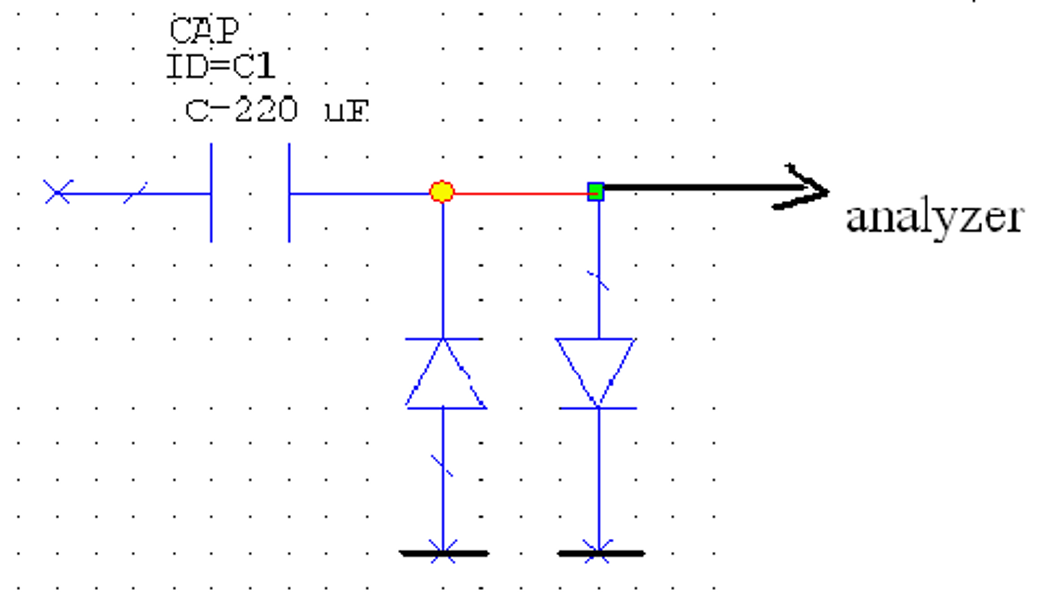
Skeptical that a DC-block only was a capacitor, I searched online and found this page from Rohde & Schwarz with the above schematics in it.
Looking at the above picture we can see:
- 1 non polarized series capacitor
- 2 PIN diodes at the output
These 2 diodes effectively limit the maximum voltage that can be output by the filter, as when applying a high voltage at the filter input the very same voltage would be seen at the filter output (due to the high capacitor value)... which your measurement instrument might not particularly appreciate.
But why PIN diodes, and what are they?
To make it simple, PIN diodes essentially are resistors whose value decrease with the current going through them:
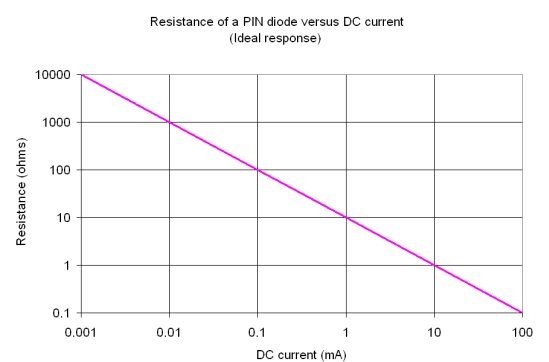
This characteristic is particularly appreciated to reduce distortion added to your signal, as you may remember that standard diodes have a very different V/I curve.
The Actual Schematics
In the end, my DC-block schematics are relatively similar to the ones from R&S:
- 1x bi-polar 50V 470uF electrolytic capacitor (yes, that's a thing!)
- 2x 13 Watts (!) RF PIN diodes
- 1x 10k input bleed resistor
I initially went for different PIN diodes.... but they exploded when I first applied 50V at the DC-block input! Thinking about it, 470uF at 50V is around 0.5 Joules so that energy needed to be dissipated somewhere.
And as you will see later, lots of testing was then performed to make sure the final diodes were up to the task.
Layout
It doesn't get as simple as this!
2 layers, silkscreen to specify the IN & OUT ports and that's pretty much it.
Measuring the Transfer Function
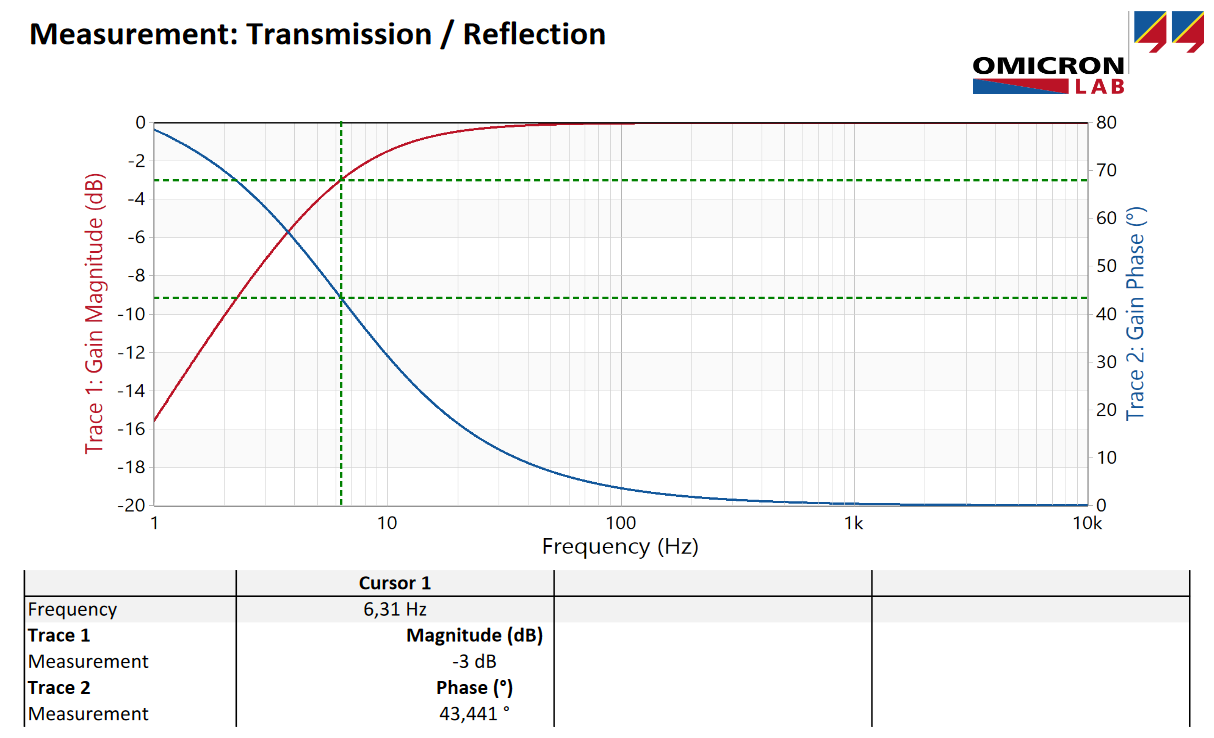
I was once again lucky enough to get access to a Bode 100 to measure my DC-block transfer function.
Keeping in mind this filter is meant to be used in 50R systems, you can see above that the 6.31Hz 3dB corner frequency ended up being very close to the expected 6.37Hz (470uF with 50R).
And even though it doesn't make a lot of sense using that DC-block for very high frequencies, I used a SA44B + TG44 combo to measure the transfer function at high frequencies:
1GHz -3dB corner... not too bad for such a big capacitor!
Device Testing
Maximum Transient Test - Pulse
Any explosion if I directly feed 50V to that DC-block?
Setup: capacitor discharged, we suddenly feed 50V through a 50R resistor to the input for a short duration.
Result: the output voltage is truncated to 1.34V.
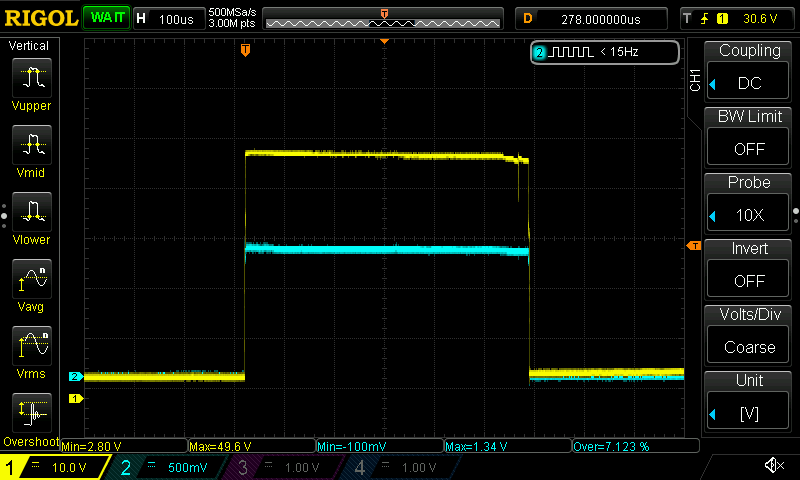
- Yellow: device input signal
- Cyan: device output signal
Maximum Transient Test - Step
How long does it take to reach back 200mV?
Setup: capacitor discharged, we suddenly feed 50V through a 50R resistor to the input.
Result: after ~500ms, the voltage gets back to 200mV.
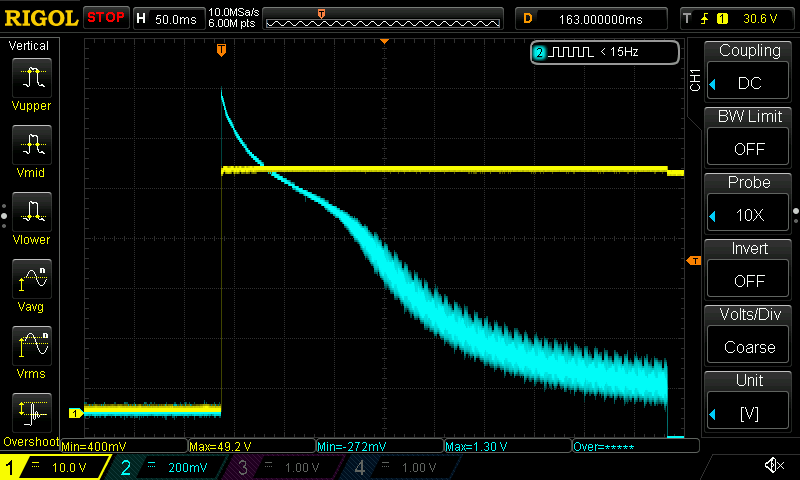
- Yellow: device input signal
- Cyan: device output signal
Maximum Transient Test - Zoomed In
What happens when the high voltage input gets applied?
Setup: capacitor discharged, we suddenly feed 50V through a 50R resistor to the input.
Result: very little output ripple.
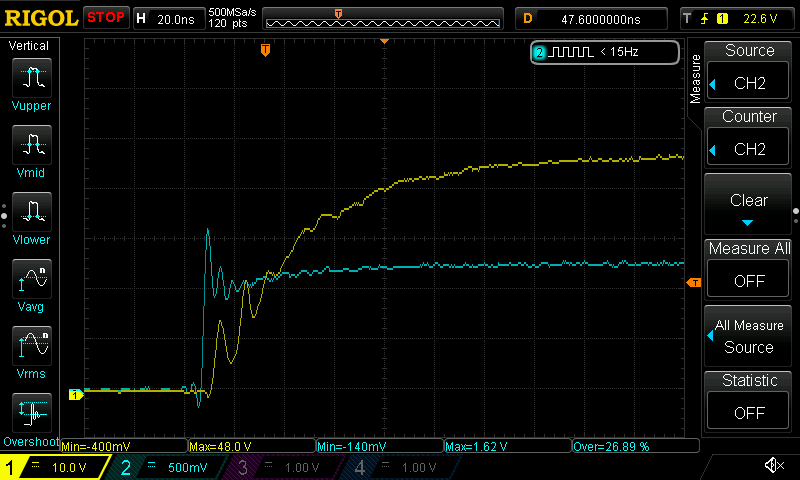
- Yellow: device input signal
- Cyan: device output signal
Guess where the ripple comes from? From reflections!
Picked Up Noise
Does this filter pickup any environmental noise?
Setup: we place our DC-block at our low frequency, low noise amplifier board input and compare the amplifier output spectrums for different input configurations (50R at the amplifier input, 50R + DC block at the amplifier input, 9V battery + 50R + DC block at the amplifier input)..
Result: Environmental noise is indeed picked up by the filter and by the wires going to the DC block.
The above measurement may actually be the reason why you don't see many low frequency DC-blocks in the market: adding shielding to such a big filter would end up adding quite some cost! If you look at the above spectrums, you basically see that the more non-shielded area you have, the more noise you pickup. It's also quite interesting to confirm that 9V batteries basically don't generate noise.
To confirm the noise pickup assumption, I then added some EMI tape around the filter....
...and got my confirmation with this noise measurement:
So what can actually be seen?
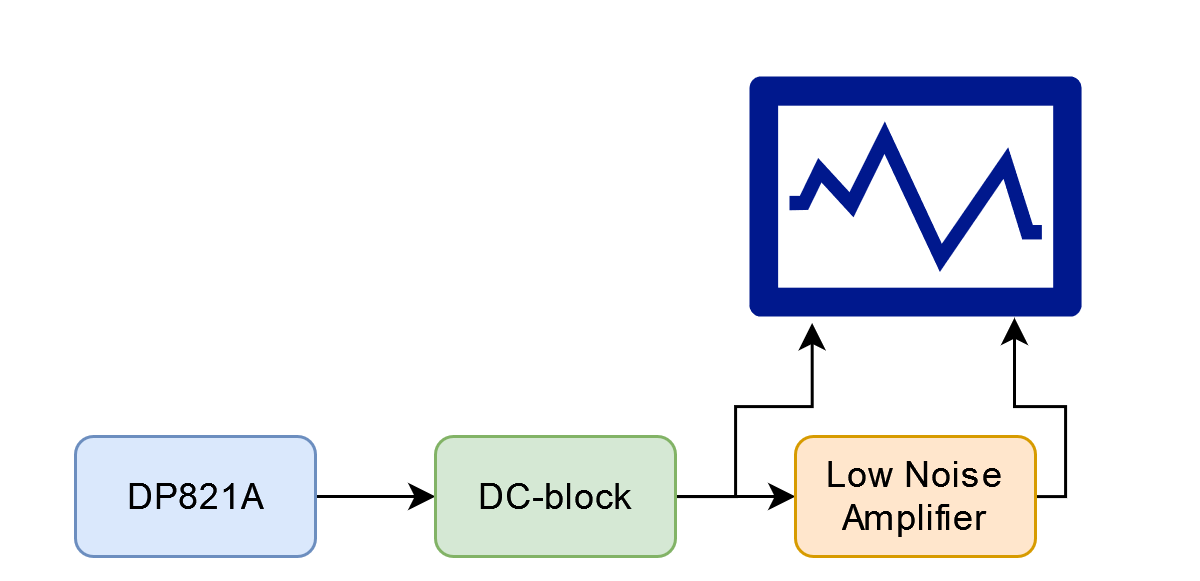
At the beginning of this article I mentioned that even lab power supplies have noisy outputs. I therefore implemented the above test setup to get the following scope capture:
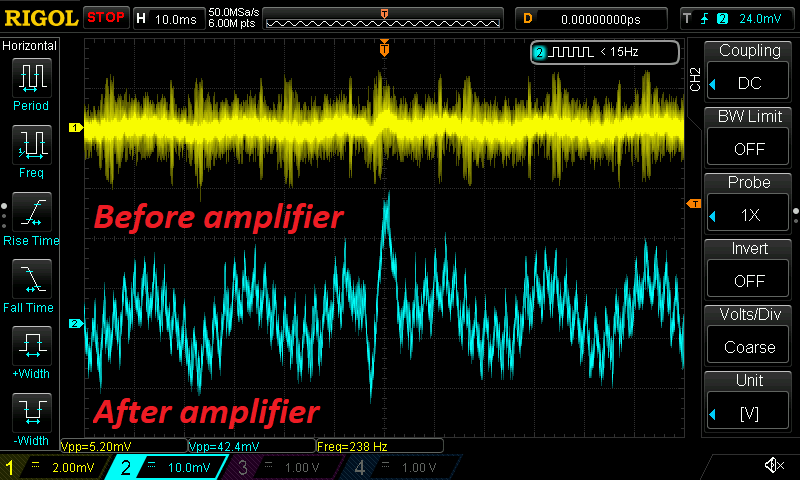
If you look at the above scope capture (taken on my Rigol DP821A power supply), you'll indeed see that the DC block and the low frequency, low noise amplifier board together allows you to see the PSU switching ripple that you wouldn't be able to see otherwise.
Conclusion
That DC-block ended up being a little more complex than I thought, but it was quite the interesting learning experience!
As usual you can find the source files here and may buy it on my tindie store if you need one right away.
